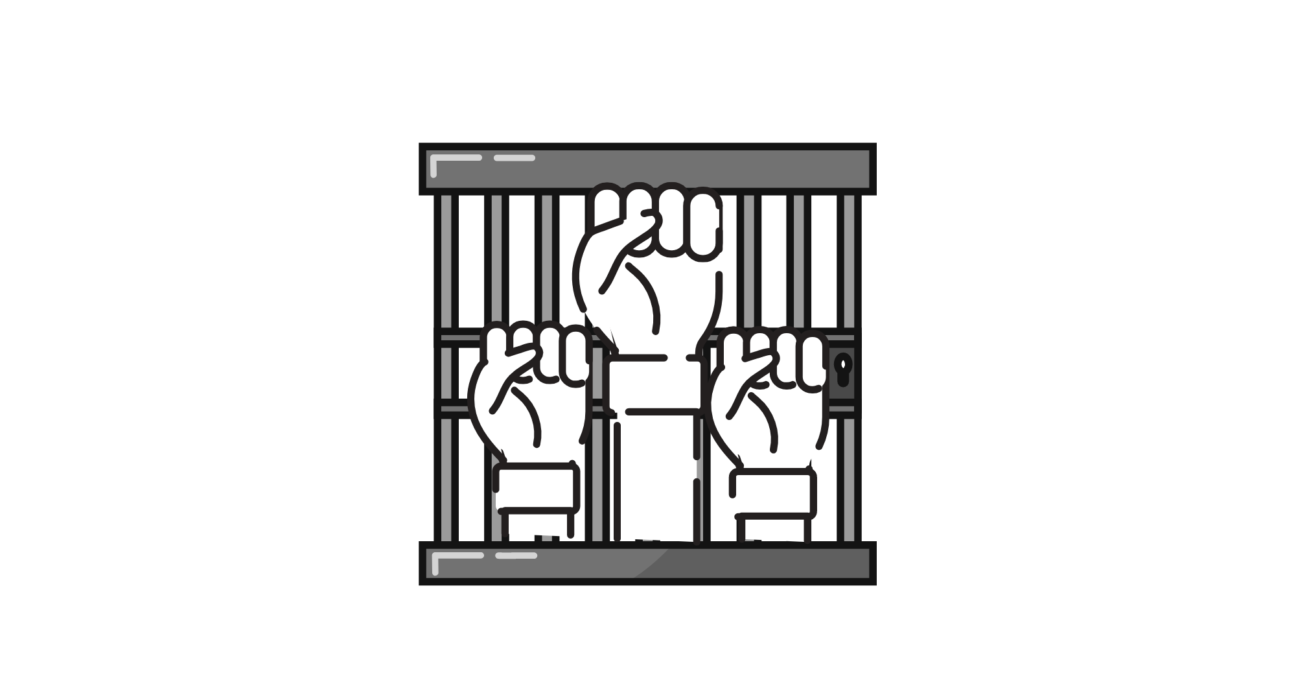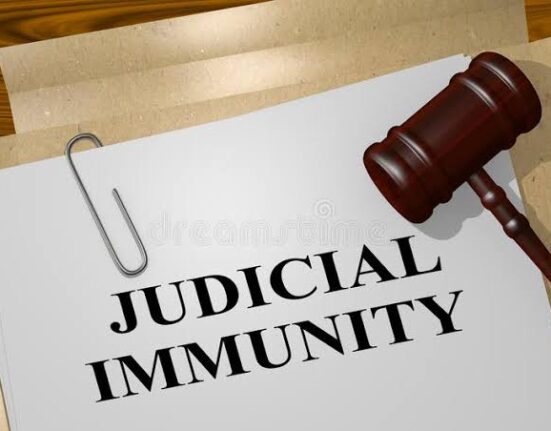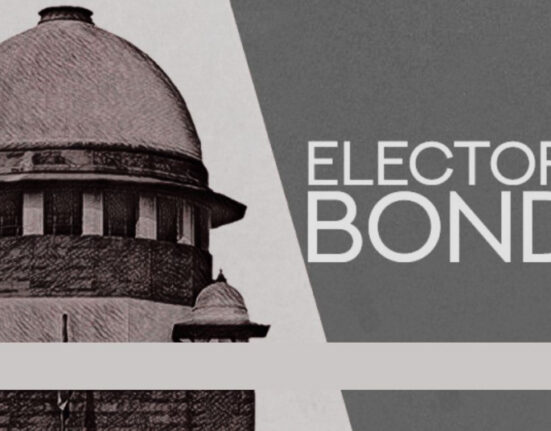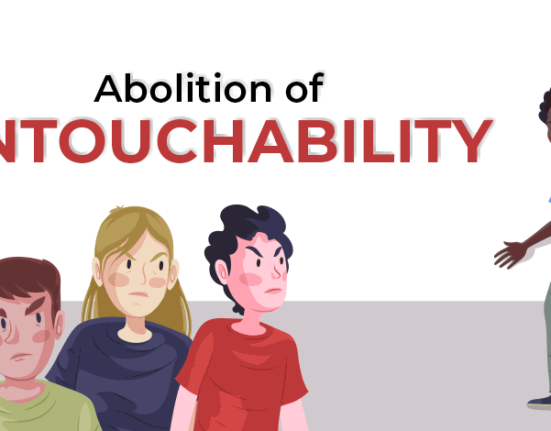Aditya Shaw, a 2nd -Year Student of Heritage Law College, has written this Article on ”Emergency Provisions Under the Indian Constitution”
Introduction
The Indian Constitution, which was adopted on January 26, 1950, is a comprehensive and dynamic document. It provides a solid framework for governance in the world’s largest democracy. The Constitution includes provisions for declaring emergencies to ensure the smooth operation of the country during times of extraordinary challenges. These emergency provisions give the government special powers to respond to crises that threaten the nation’s security and integrity. In this article, we will look at the various types of emergencies and circumstances under which they can be declared. We will also discuss the landmark case laws that have shaped the interpretation and implementation of these provisions.
Definition of Emergency
An emergency is a situation that necessitates immediate action by authorities to protect life, property, and public welfare. Natural disasters, accidents, civil unrest, disease outbreaks, and other unforeseen events can all cause emergencies. In many cases, emergencies occur because of the government’s failure to adequately address the situation.
The United States Code defines an emergency as “any occasion or instance for which, in the determination of the President, Federal assistance is needed to supplement State and local efforts and capabilities to save lives and to protect property and public health and safety, or to lessen or avert the threat of a catastrophe in any part of the United States” (42 U.S.C. § 5122).[1]
Similarly, the Canadian Emergency Management Act defines an emergency as “an imminent or actual event that, in whole or in part, causes or threatens to cause death, injury or damage to property or the environment, and that cannot be effectively dealt with by a province, a territory, a First Nation, or an organization affected by the event” (Emergency Management Act, S.C. 2007, c. 15, s. 2).[2]
Types of Emergencies
Part XVIII of the Constitution is titled ‘Emergency Provisions,’ and it contains Articles 352 to 360. The Indian Constitution provides for three types of emergencies, each of which addresses a specific situation:”
National Emergency (Article 352):
The President of India can declare a National Emergency when there is an immediate threat to the security of the country or any part of it, whether from external aggression or internal disturbance. The Union Cabinet or the Prime Minister initiates the decision to declare a National Emergency, which requires the President’s approval. The decision, however, must be ratified by both Houses of Parliament within one month.
During a National Emergency, the central government can seize the powers of state governments and suspend citizens’ fundamental rights. The Parliament can also pass laws on subjects from the State List. During a National Emergency, however, the Constitution cannot be amended. A National Emergency can last for a maximum of six months. Moreover, it can be extended with Parliament’s approval every six months.
President’s Rule (Article 356):
The President can impose President’s Rule, also known as State Emergency or Constitutional Emergency when the President believes that the constitutional machinery in a state has broken down. Moreover, the state’s governance cannot be carried out in accordance with the Constitution. The President makes the decision to impose President’s Rule after consulting with the Council of Ministers. The decision, however, must be ratified by both Houses of Parliament within two months.
In a State Emergency, the President can take over State functions and dissolve the State Assembly. The Parliament can also pass laws on subjects from the State List. The State Emergency can last for a maximum of six months. However, it can be extended with Parliament’s approval every six months.
Financial Emergency (Article 360):
The President of India can declare a Financial Emergency when there is a threat to India’s financial stability or credit, or any part of its territory. The Union Cabinet or the Prime Minister makes the decision to declare a Financial Emergency, subject to the President’s approval. The decision, however, must be ratified by both Houses of Parliament within two months.
During a Financial Emergency, the Central Government may issue financial directives to the states. The President can also instruct the Reserve Bank of India (RBI) to prioritize the payment of some debts over others. Citizens’ fundamental rights, however, cannot be suspended during a financial emergency. A Financial Emergency can last for a maximum of six months. However, it can be extended with Parliament’s approval every six months.
National Emergency
Proclamation of Emergency (Article 352):
Article 352 empowers the President of India to declare a National Emergency if the President believes that there is a grave threat to the security of India or any part of it, whether the threat is the result of external aggression, armed rebellion, or an internal disturbance beyond the control of state governments. The Union Cabinet or the Prime Minister makes the decision to declare a National Emergency, and the President must approve it. The decision, however, must be ratified by both Houses of Parliament within one month.
During a National Emergency, the Central Government has the authority to assume the powers of the State governments and suspend or modify certain fundamental rights of citizens, such as the right to free speech and expression, the right to move freely throughout the country, and the right to assemble peacefully without arms. The Constitution permits Parliament to legislate on State List subjects, which are usually under the state government’s jurisdiction.
The declaration of a National Emergency empowers the Central Government to deal with the crisis effectively. The government has the authority to issue orders to state governments, deploy armed forces, and take any other actions necessary to maintain law and order and protect the country’s security. Ordinances issued by the President have the same force and effect as Acts of Parliament.
A National Emergency can last for a maximum of six months. However, it can be extended with Parliament’s approval every six months. During a National Emergency, however, the Constitution cannot be amended. The Supreme Court of India has the authority to review the legality of a National Emergency Proclamation, and any law or order issued during the emergency can be challenged in court.
Who can proclaim Emergency grounds for the proclamation of Emergency:
The President of India has the authority to declare a National Emergency under Article 352 of the Indian Constitution. The decision to declare a National Emergency, on the other hand, is made by the Union Cabinet or the Prime Minister, and the President must approve it. The President can revoke the emergency if satisfied that the grounds for it no longer exist.
Article 352 of the Indian Constitution defines the grounds for declaring a national emergency as follows:
1. War: A situation in which India is at war with another country or is engaged in an armed conflict that threatens the country’s security.
2. External Aggression: A situation in which another country or a group of countries poses an external threat to India’s security, or where such a threat is imminent.
3. Armed Rebellion: A situation in which there is an armed rebellion against the government of India, posing a threat to the country’s security and stability.
These grounds are intended to cover situations in which there is a serious threat to the country’s security, unity, and integrity and the normal functioning of the government machinery is unable to address the situation. The decision to declare a National Emergency must be based on a careful assessment of the situation and the need to protect the country’s and its citizens’ interests.
Consequences of Proclamation of Emergency:
The declaration of a National Emergency under Article 352 of the Indian Constitution has serious implications for the functioning of the government and citizens’ rights. Among the most important consequences are:
Suspension or modification of fundamental rights:
During a National Emergency, the President has the authority to suspend or modify certain fundamental rights of citizens, such as the right to free speech and expression, the right to move freely throughout the country, and the right to peacefully assemble without arms. The government may also seize the powers of state governments and pass laws on subjects covered by the State List.
Granting the Central Government Extraordinary Powers:
The declaration of a National Emergency gives the Central Government Extraordinary Powers to deal with the crisis effectively. The government has the authority to issue orders to state governments, deploy armed forces, and take any other actions necessary to maintain law and order and protect the country’s security. Ordinances issued by the President have the same force and effect as Acts of Parliament.
Power centralized:
During a national emergency, the central government can seize the powers of state governments and exert control over their operations. This can lead to a concentration of power and a weakening of the country’s federal structure.
Judicial review of emergency measures:
During a National Emergency, any law or order made can be challenged in court. The Supreme Court of India has the authority to review the validity of the proclamation of the emergency.
Impact on civil liberties:
In a National Emergency, the suspension or modification of fundamental rights can greatly impact civil liberties and democratic freedoms. This can lead to a suppression of dissent and a deterioration of democratic values.
It is important to note that declaring a National Emergency is a serious step that should be taken only in exceptional circumstances where there is a grave threat to the country’s security, unity, and integrity. The Constitution includes checks and balances to ensure that the government’s emergency powers are not abused and that citizens’ rights are protected.
State Emergency
Center’s Duty to Protect States (Article 355):
Article 355 of the Indian Constitution requires the central government to protect each state from external aggression and internal disturbance and to ensure that each state’s government operates in accordance with the provisions of the Constitution. This means that the Central Government is responsible for ensuring that the State machinery functions properly and that citizens’ rights are protected.
The duty to protect the states is an essential component of the Indian Constitution’s federal structure. It acknowledges that the states are an essential component of the Union and that the central government bears responsibility for their well-being and security. The duty to protect the states does not apply to a single state or region but to the entire country.
The duty to protect states has internal as well as external dimensions. The central government is in charge of defending the states from external aggression. It includes threats from other countries or groups of countries. The central government is responsible for safeguarding states from internal disturbances, which encompass threats to security within the country.
The central government has a variety of tools at its disposal to carry out its responsibility to protect the states. It can deploy armed forces, offer financial aid, and take other measures to ensure proper functioning of the State machinery. The central government can also advise and assist state governments with matters of governance and administration.
Protecting states doesn’t grant the central government the right to interfere with or undermine state governments’ functioning. The duty to protect the states is intended to be carried out in a way that respects the Constitution’s federal structure and promotes cooperative federalism.
Grounds for proclamation under Article 356:
Article 356 of the Indian Constitution covers the provision of President’s Rule, also known as State Emergency or Constitutional Emergency. This constitutional provision empowers the President of India to impose President’s Rule in a State under specific circumstances when the Constitutional machinery of the State fails to function effectively.
The primary ground for the proclamation of the President’s Rule is “the failure of the Constitutional Government in the State.” This encompasses situations where the State Government fails to comply with or give effect to the directions issued by the Union Government. However, it is essential to note that non-observance of the provisions of Article 174(1) of the Constitution, in the case of a premature dissolution of the Legislative Assembly of the State, cannot be a valid ground for invoking Article 356(1) in that State. The Supreme Court, in Special Reference No. 1 of 2002[3], ruled that the function of framing the election schedule for the new Legislative Assembly lies with the Election Commission, and any infraction of Article 174(1) cannot be remedied by resorting to Article 356(1) by the President.
Merely the defeat of the ruling party in a State at the Lok Sabha election cannot, without any additional circumstances, support the inference that the State Government cannot be carried on in accordance with the provisions of the Constitution. However, in cases where there is a total rout of candidates belonging to the ruling party, indicating complete alienation between the Government and the people, it may be symptomatic of a situation where the government in that State cannot be carried on in accordance with the Constitution.
Case Laws
In the landmark judgment of S.R. Bommai v. Union of India[4], the Supreme Court held that the “violation of secular features of the Constitution” by a State government could give rise to a situation where the government in that State cannot be carried on in accordance with the provision of the Constitution.
It is important to note that the Apex Court, in Rameshwar Prasad v. Union of India[5], clarified that factors such as “maladministration” and “corruption” by a State government would not be grounds for invoking power under Article 356. Additionally, the “likelihood of defection” would not be a relevant consideration for the Governor to report under Article 356.
In conclusion, Article 356 is a constitutional provision designed to safeguard the democratic principles and integrity of the Constitution. The grounds for the proclamation of the President’s Rule are restricted to specific circumstances where the Constitutional machinery of the State fails. Moreover, the government is unable to function in accordance with the provisions of the Constitution. The Supreme Court’s interpretations and rulings further ensure that the imposition of the President’s Rule is not misused and is exercised judiciously to maintain the balance of power between the Union and the States.
Financial Emergency (Article 360):
Article 360 of the Indian Constitution empowers the President of India to declare a Financial Emergency when there is a threat to India’s or any part of its territory’s financial stability or credit. This provision is intended to address situations in which the nation’s economic health is jeopardized and immediate action is required to protect the country’s financial interests.
Duration of Financial Emergency:
The President may declare a financial emergency for a period of two months. However, to extend the Financial Emergency beyond the initial two months, both Houses of Parliament must agree. The President can extend the Financial Emergency indefinitely until the economy stabilizes enough to revoke the proclamation.
Effects of Financial Emergency:
1. SUSPENSION OF FINANCIAL AUTONOMY: During a Financial Emergency, the President may direct state governments to follow certain financial principles. State governments are required to follow these directives, and the Central Government gains greater control over the financial affairs of the states. This measure is intended to ensure fiscal discipline and coordination during economic downturns.
2. REDUCTION OF SALARIES AND ALLOWANCES: During a Financial Emergency, the President has the authority to authorize the reduction of salaries and allowances for all or any class of persons serving in connection with the Union’s affairs. This includes high-ranking officials such as the President, Vice President, Prime Minister, Supreme Court and High Court Judges, and other government employees. Salary and allowance cuts are frequently viewed as a means of containing government spending and strengthening the nation’s financial position.
3. SUSPENSION OF PART IV OF THE CONSTITUTION: During a financial emergency, the President has the authority to suspend the implementation of Part IV of the Indian Constitution, which contains the Directive Principles of State Policy. Directive Principles provide policy guidance to the government, but they are not legally enforceable. Putting these principles on hold during a financial emergency allows the government to focus on immediate economic priorities without being constrained by non-justiciable guidelines.
Importance of Financial Emergency:
The provision of a Financial Emergency is an essential constitutional tool for dealing with exceptional economic challenges that threaten India’s financial stability and creditworthiness. However, it is critical to understand that Financial Emergency is an extreme and rarely used measure. Its invocation necessitates careful consideration and the utmost importance to protect the country’s principles of federalism and democracy.
The framers of the Constitution intended to use Financial Emergency only in the direst of circumstances, where no other alternative measures could effectively address the economic crisis. The provision of Financial Emergency has not been invoked since the adoption of the Indian Constitution in 1950. This reflects the commitment to maintaining the balance of powers between the Union and the States while ensuring the nation’s financial well-being remains a top priority.
In conclusion, the Financial Emergency provision acts as a safety valve, safeguarding India’s financial interests during extraordinary circumstances. Its sparing and judicious use, in line with the principles of the Constitution, remains essential to uphold the democratic fabric and federal structure of the country while effectively managing economic challenges when they arise.
Notable Instances of National Emergency:
The First National Emergency (1962-1968):
The first National Emergency was declared on October 26, 1962, by then-President Dr. Sarvepalli Radhakrishnan in response to the escalating Sino-Indian War with China. The Chinese aggression in the northeastern border regions posed a serious threat to India’s security and territorial integrity. The emergency was declared under Article 352 of the Constitution, which empowered the Central Government to take the necessary measures to deal with the external threat.
During this time, certain fundamental rights were suspended, and the Parliament was given the authority to legislate on matters within the jurisdiction of the states under the State List (List II of the Seventh Schedule). The state of emergency was lifted on January 10, 1968, after tensions with China subsided and the situation stabilized.
The Second National Emergency (1971-1977):
During the Indo-Pakistani War and the Bangladesh Liberation War, then-President V.V. Giri declared the second National Emergency on December 3, 1971. India’s participation in these wars to support the creation of Bangladesh resulted in armed aggression and external threat from Pakistan. The government declared a National Emergency to deal with the crisis and maintain national unity and security.
Certain fundamental rights were suspended during this emergency, as they were during the first. The Central Government was given the authority to legislate matters on the State List. After the general elections were completed on March 21, 1977, the emergency was lifted.
The Controversial Third National Emergency (1975-1977):
The third National Emergency is also known as the Emergency of 1975. It is still regarded as one of the most contentious episodes in Indian history. It was declared on June 25, 1975, by then-Prime Minister Indira Gandhi, who cited “internal disturbance” as the reason. The government claimed that political unrest and opposition movements posed a threat to national security and stability.
Civil liberties were suspended during the emergency, media censorship was imposed, and prominent opposition leaders, journalists, and activists were arrested. Indira Gandhi’s government sought to stifle political dissent and maintain power. During the emergency, authoritarian rule was imposed, and widespread criticism of human rights violations was leveled.
The emergency was lifted on March 21, 1977, following the general elections. Resulting in the ruling party suffered a landslide defeat and the opposition triumph. The public mandate expressed unequivocal opposition to the Emergency and marked a return to democratic governance.
Finally, the occurrences of the National Emergency in India reflect critical periods in the country’s history when extraordinary measures were deemed necessary to address external threats or internal challenges. The first two emergencies were declared in response to wars and armed conflicts. The third emergency signaled the beginning of a dark period of authoritarianism and political repression. Historical events remind us of the crucial balance between safeguarding national security and upholding democratic values during times of crisis. The lessons from these disasters have shaped India’s political landscape and comprehension of emergency provisions in its constitutional framework.
Conclusion
The Emergency Provisions of the Indian Constitution are an essential aspect of the nation’s governance. It provides a framework for dealing with extraordinary challenges that may threaten the country’s security, stability, and financial well-being. These provisions enable the government to respond quickly and effectively to situations of grave concern. It preserves the democratic fabric while balancing the Union and the States.
In the past, the National Emergency provision has been invoked in times of armed conflict and threats to territorial integrity. It delegated to the Central Government the necessary powers to protect the nation’s security but with strict checks and balances. The contentious Emergency of 1975 serves as a stark reminder of how important it is to uphold democratic values and civil liberties even in times of crisis.
When a state’s constitutional machinery fails, President’s Rule, also known as a State Emergency, allows the President to intervene. Using emergency provisions demands caution to preserve the federal structure and uphold state autonomy while ensuring governance continuity.
Since independence, the Financial Emergency provision remains unused, serving as a last resort to safeguard India’s financial stability and creditworthiness. Its limited use emphasizes the country’s commitment to upholding democratic principles, even in the face of economic difficulties.
Emergency Provisions in the Constitution require a delicate balance between decisive action and safeguarding individual rights and freedoms. The judiciary’s role in reviewing the legality of emergency proclamations ensures that powers are exercised fairly and justly.
As India evolves and faces new challenges, the careful and prudent application of these emergency provisions remains critical. Ensuring that emergency powers are used only in extreme circumstances and with due regard for democratic values will help to preserve the essence of India’s vibrant and diverse democracy.
References
[1] 42 USC 5122: Definitions (house.gov)
[2] Emergency Management Act (justice.gc.ca)
[3] Under Article 143(1) Of The … vs ——– on 28 October, 2002 (indiankanoon.org)
[4] S.R. Bommai vs Union Of India on 11 March, 1994 (indiankanoon.org)
[5] Rameshwar Prasad & Ors vs Union Of India & Anr on 24 January, 2006 (indiankanoon.org)







Leave feedback about this